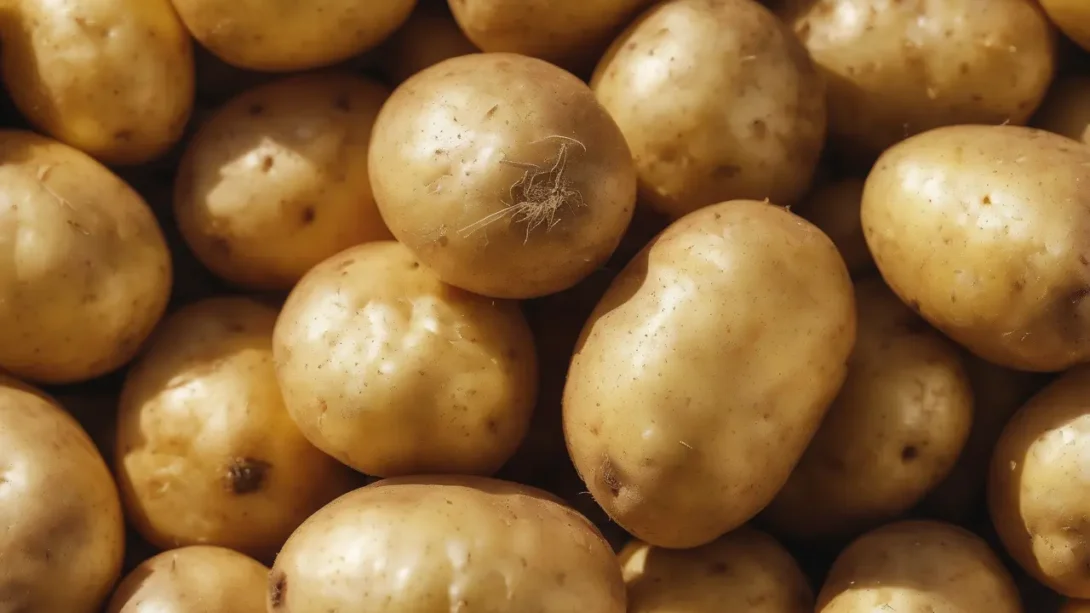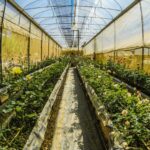Potatoes (Solanum tuberosum), with their rich history and global significance, stand as one of the world’s staple food crops. Essential to various cuisines across continents, these tuberous crops are cultivated for their versatility and nutritional value. Potatoes reproduce through two primary methods: sexual reproduction, involving the production of seeds, and asexual reproduction, through the vegetative propagation of tubers. This article delves into the fascinating world of potato reproduction, highlighting the processes, advantages, and challenges associated with each method.
Potato Biology
The potato plant is a part of the nightshade family, characterized by its distinct parts: roots, stems, leaves, flowers, and the underground tubers that most people are familiar with. The lifecycle of a potato plant begins with the planting of a seed potato or true potato seed and spans through to the development of tubers underground, which are harvested as the crop. This cycle not only illustrates the plant’s growth but also its reproductive strategies, which ensure the continuation of the species.
Sexual Reproduction in Potatoes
Sexual reproduction in potatoes occurs through the flowering and fertilization process, leading to the production of true potato seeds (TPS). This method involves the pollination of potato flowers, which can be facilitated by insects or manually by breeders, resulting in the formation of fruits that resemble small, green tomatoes. These fruits contain seeds that carry the genetic information from the parent plants, offering a means to introduce new genetic traits and develop new potato varieties.
Advantages of Sexual Reproduction
The primary advantage of sexual reproduction in potatoes is the genetic diversity it introduces. This diversity is crucial for breeding programs aimed at improving disease resistance, yield, and other desirable traits in potato crops. Through the careful selection of parent plants, breeders can develop varieties that are better adapted to various environments and resistant to specific pests and diseases.
Challenges of Sexual Reproduction
Despite its advantages, sexual reproduction in potatoes presents certain challenges. The most significant is the variability in offspring, as seeds do not produce exact clones of the parent plant. This variability can result in unpredictable crop characteristics, which is less desirable for commercial growers seeking uniformity. Additionally, growing potatoes from true seeds requires more time and resources than vegetative propagation, as seedlings take longer to mature and require more care in their early stages.
Asexual Reproduction in Potatoes
The most common method of potato cultivation is asexual reproduction, specifically vegetative propagation using tubers. This process involves the development of eyes or buds on the tuber’s surface, which grow into new plants genetically identical to the parent. This method ensures the consistency and uniformity of the crop, making it highly favored among commercial farmers and home gardeners alike.
Asexual Reproduction in Potatoes
Asexual reproduction, particularly through vegetative propagation using tubers, is the cornerstone of potato farming. This method guarantees that each new plant is a genetic clone of the parent, preserving the desired traits of specific potato varieties.
Preparing Tubers for Planting
The selection of seed potatoes is a critical step in the asexual reproduction process. Gardeners and farmers must choose healthy, disease-free tubers to ensure a successful crop. Larger tubers can be cut into smaller pieces, each containing one or two eyes, to increase the number of plants grown from a single tuber. It’s crucial that these pieces are allowed to cure or form a callous over the cut surface before planting, to prevent rot and disease.
Advantages of Asexual Reproduction
- Uniformity: Asexual reproduction ensures that every plant is genetically identical to its parent, resulting in a uniform crop. This is particularly important for commercial growers who need consistency in size, shape, and maturity time for market demands.
- Faster Crop Cycle: Vegetative propagation is quicker than growing potatoes from true seeds. Tubers planted in spring can often be harvested as early as late summer or fall, depending on the variety and growing conditions.
Challenges of Asexual Reproduction
- Disease Transmission: The biggest drawback of using tubers for propagation is the risk of transmitting soil-borne diseases from one generation to the next. Diseases like potato blight and viral infections can be carried on the tubers, emphasizing the need for careful selection and rotation practices.
- Reduced Genetic Diversity: While uniformity is an advantage, the lack of genetic diversity can make crops more susceptible to pests and diseases. Over time, this can lead to decreased resilience and the need for more intensive management practices.
Potato Propagation Techniques
Successful potato cultivation requires more than just planting tubers in the ground. Understanding the specific needs of potato plants can lead to healthier crops and higher yields.
- Soil Preparation: Potatoes prefer well-draining, loose soil rich in organic matter. Preparing the ground with compost or aged manure can improve soil health and support robust potato growth.
- Planting Depth and Spacing: Tubers should be planted about 3 to 4 inches deep, with spacing of 12 inches apart in rows that are 2 to 3 feet apart. This spacing allows enough room for the plants to grow and for the tubers to expand underground.
- Watering and Fertilizing: Consistent watering is crucial, especially once the plants start flowering and the tubers begin to form. Over-watering, however, can lead to rot, so soil moisture should be carefully managed. A balanced fertilizer applied at planting and again mid-season can support healthy growth.
Harvesting and Storing Potatoes
Harvesting potatoes at the right time and storing them correctly are crucial steps to ensure the longevity and quality of the crop. Proper handling from the moment of harvest can significantly impact the shelf life of potatoes.
- Curing Potatoes: Before storing, potatoes should be cured for about one to two weeks in a dark, well-ventilated area with temperatures around 50-60°F (10-15°C). Curing helps heal any minor cuts and thickens the skin, reducing moisture loss and improving shelf life.
- Storage Conditions: After curing, store potatoes in a cool, dark, and humid environment. Ideal storage temperatures are between 40-45°F (4-7°C) with high humidity to prevent drying out. Avoid storing potatoes in the refrigerator, as too cold temperatures can convert starch into sugar and alter the taste.
- Inspection and Rotation: Regularly check stored potatoes for signs of spoilage, such as soft spots or sprouting, and remove any affected tubers to prevent the spread of rot. Properly stored, cured potatoes can last several months.
Innovative Practices in Potato Reproduction
Advancements in agricultural practices have introduced innovative methods for potato reproduction, addressing some of the challenges associated with traditional propagation.
- Hydroponic Systems: Growing potatoes hydroponically allows for the control of nutrients and water, reducing the risk of soil-borne diseases. This method can produce healthy tubers more quickly than soil cultivation, though it requires more initial setup and monitoring.
- Tissue Culture Techniques: Tissue culture is a method of producing potato plants from sterile plant tissue in a controlled environment. This technique can rapidly produce disease-free planting material and is especially useful for preserving genetic material and producing seed potatoes.
- Genetic Engineering: Scientists are working on genetically modified potatoes that are resistant to common diseases and pests. While controversial, these modifications could significantly reduce the need for chemical pesticides and increase yield.
Conclusion
Potato reproduction, whether through sexual or asexual means, is a fascinating process that underscores the importance of this staple crop in global agriculture. Understanding the biology of the potato plant and the methods for its propagation is crucial for successful cultivation, whether for small-scale home gardening or large-scale commercial production.
By adopting best practices for planting, care, and storage, gardeners and farmers can ensure healthy, productive potato crops. Meanwhile, innovative reproduction techniques offer promising solutions to some of the challenges faced in traditional potato farming, including disease management and the need for genetic diversity. As we continue to refine these methods and technologies, the humble potato remains at the forefront of agricultural innovation, feeding millions around the world.



